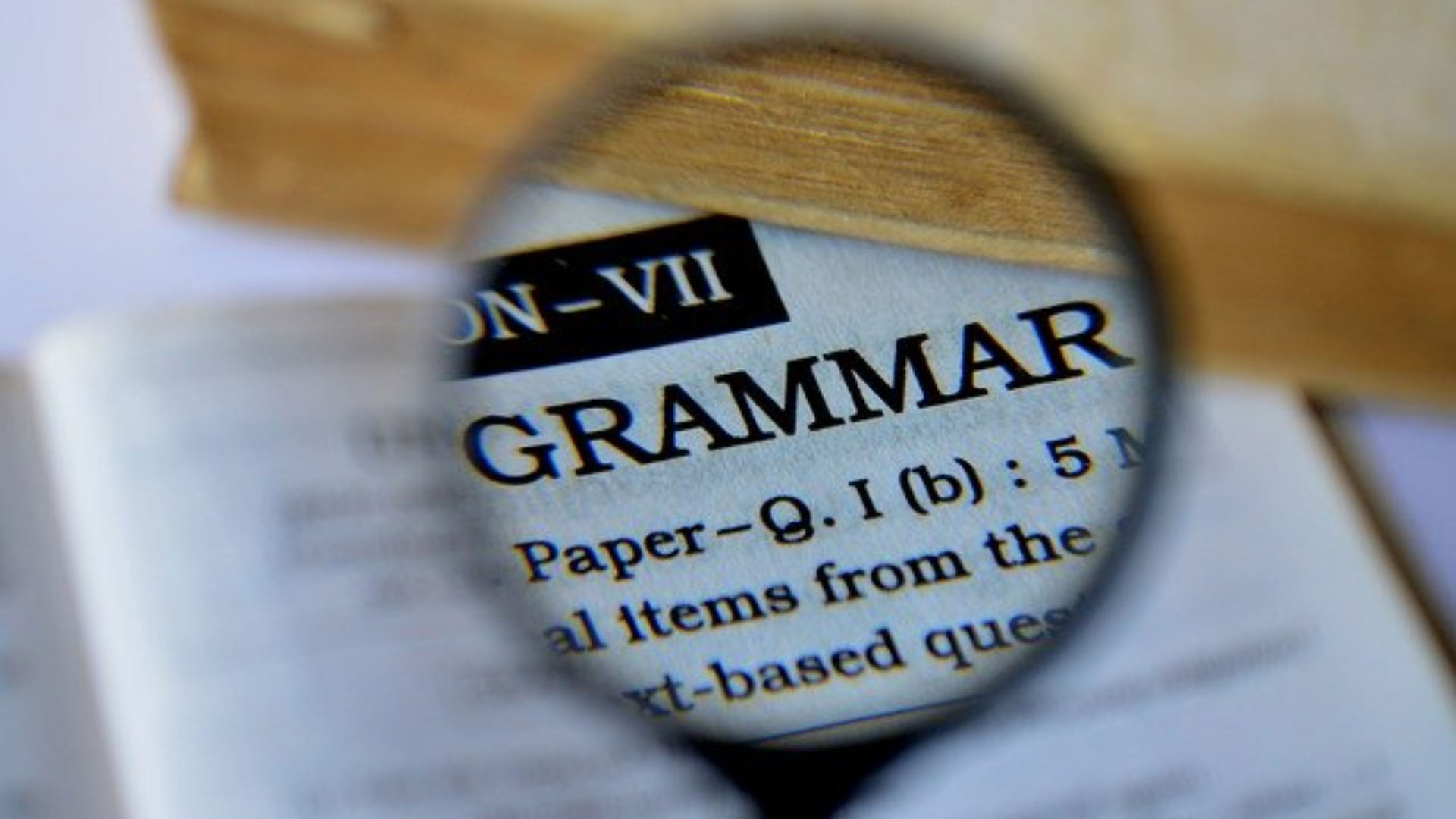Practice Worksheet
Transcript
Disclaimer
I am using an automatic transcript service as it is not possible for me to do it on my own and I cannot afford human transcription at the moment. The service claims to have about 95% accuracy, which means there will still be some mistakes, so my apologies for having a less than perfect transcript, but I hope I can afford human transcription soon and I will solve this problem. However, the service is pretty good, and the transcript is almost perfect.
Transcript
Welcome to a new episode from English plus podcasts. Today’s episode is about grammar and the level of this episode is advanced. So this is grammar advanced. And let me remind you that we have series for grammar, advanced grammar, intermediate, and grammar elementary. So if you find this a little bit difficult for your level, you can still follow the intermediate series or the elementary series that is going to start tomorrow.
[00:00:31] Let me remind you that you can find the transcript of this episode in a link. I will leave in the description and you can also benefit from the PDF practice worksheets with their answer keys. If you become a patron of the show on Patreon. So if you want to invest in your English learning, consider becoming a patron of the show on Patreon.
[00:00:52] And in this way, also you will support English plus podcast and you will help us continue with our daily episodes. And we have a lot of great things coming your way. So now, without further ado, let’s start with our first episode in this grammar advanced series. And the first episode will be dedicated to talk about the present continuous and the present simple.
[00:01:16] We’re not going to talk about the basic uses of the present continuous and the present simple, because that is taken care of in the elementary series and the intermediate series. Now we will talk about some of the special uses of the present continuous and the present. Simple. So first let’s talk about state verbs or some of you might know them as state of verbs.
[00:01:37] We can use the present continuous with some state of verbs. Now that might sound a little bit strange to you because everything we’ve said earlier or everything you’ve learned earlier about the present continuous says that we don’t use it with the state of verbs or the state verbs. But now, because we’re talking about some advanced grammar, We’re talking about some of the possibilities that we don’t usually teach at lower levels because that will just confuse learners.
[00:02:05] But now what we’re saying is that you can use the present continuous with some state verbs, like attract, like look, love and sound to emphasize that a situation is temporary or for a period of time around the present. Let’s take a look at these two examples and compare the use of the present. Simple in one of them and the present continuous in the second, Ella stays with us quite often.
[00:02:32] The children love having her here and look at the same example, but with the present continuous Ella’s with us at the moment, the children are loving having her here. In the first example we said quite often, so we’re talking about a, kind of a permanent situation. So we use the present, simple, the children love having her here, but in the second one, we implied that the situation is temporary.
[00:02:59] We said Ella’s with us at the moment, the children are loving having her here. They’re loving it because it’s a temporary thing just for a period of time. It’s not forever. It’s not permanent. So remember I said, we can use the present continuous with some state verbs doesn’t mean you have to, but pay attention that does not apply to all state of verbs.
[00:03:20] Some state verbs are rarely used with the present continuous and these include believe consists of doubt and own. And now something else also about state verbs, some verbs have different meanings when they are used to talk about States. And when they describe actions with their state meanings, they usually take simple, rather continuous forms where their action meanings, they may take simple or continuous forms, depending on the context.
[00:03:49] Let’s see this in an example, so that we can understand better what we’re talking about. In the first example, we say the app doesn’t appear to work on my phone. I’m talking about the state doesn’t seem to work. So here, the present simple is the best choice of course. But look at the other example, Johnny is currently appearing in a musical on Broadway.
[00:04:12] Appearing here does not have the meaning of seeing appearing here has the meaning of taking part in a musical on Broadway. So that is an action that is not a state. Some state verbs can be used both as a state verb or as an action verb based on the meaning verse like that are costs, expect, feel fit, have imagined measure thing or way.
[00:04:38] So that is about state verbs. Let’s talk about some other state verbs and those are specially mental state verbs with some verbs describing mental States, like find, realize, regret, think, and understand we can use the present continuous to emphasize that we have recently started to think about something or that we are not sure about something.
[00:05:02] For example, we can say, I regret that the company will have to be sold. And that means I’ve made the decision and I’m sorry about it. But when you say I’m regretting my decision to give him the job, that means I’m increasingly aware that it was the wrong decision. So we’re talking about something. That we have recently started to think about in the second example, I’m regretting let’s talk about two more examples and see what we can do and what we can do when it means, think carefully about consider is only used with the present.
[00:05:36] Continuous, for example, he’s considering taking early retirement, not he considers taking early retirement because the meaning here is think carefully about. And when consider is using this way, we use it in the present. Continuous, not in the present, simple, some other verbs describing preferences and mental States like agree, believe, conclude, no, and prefer are rarely used with the present.
[00:06:02] Continuous. For example, we say, I believe you now not I’m believing you now. So that being said about the mental state verbs and the things we can use with the present continuous and the things we can’t use with the present continuous. Now, remember, I’m focusing on the present continuous here, because we know that we usually use the present simple with state verbs and mental state verbs, obviously.
[00:06:25] And here, we’re talking about the possibilities of using the present continuous with state verbs and mental state verbs. So now let’s move to talk about something else and that is performative. But first, what are performatives performatives are verbs that perform the action they described. That’s the meaning of performative.
[00:06:45] Yeah. Maybe it’s a kind of a fancy name for fancy grammatical name for a verb that performs the action it describes. So these are the performatives. We use the present simple with verbs, which perform the action. They describe that we call performatives. For example, we say, I suggest you park outside the city and get the bus to the center.
[00:07:08] Not I’m suggesting. And we request that you read the terms and conditions carefully before signing. And if you’re wondering what kind of verbs are considered performatives, I’ll give you some examples. We have verbs like acknowledge, admit, advise apologize, beg, confess, congratulate, declare, deny, forbid, guarantee, name, order, permit, predict.
[00:07:36] Promise refused. Remind requests, thank and worn. Now some verbs used as performatives with the present, simple in affirmative, have a similar meaning with either the present simple or continuous in negative. So in affirmative, yes. We said that performatives are usually used with the present simple, but some of them can be used in negative, both in the present, simple or continuous with a similar meaning.
[00:08:04] And especially, we’re talking about apologized, deny, guarantee, promise, and suggest. For example, we can say, I don’t deny taking the books, but Miguel said it would be okay. Or we can say, I’m not denying taking the books. Both are fine. Both have exactly the same meaning. And there’s something else you need to know about performatives and that is, we usually use models with them to make what we say more tentative.
[00:08:32] Or polite. For example, we can say, we would advise you to arrive two hours before the flight leaves. Of course we can say, we advise you to arrive two hours before the flight leaves, but that would be a little bit direct. If you want to sound a little bit more polite or tentative. Not so sure about what you’re saying.
[00:08:53] You don’t want to make it sound like an order. Well, the basic use of it here is to sound more polite, just like here. Instead of we advise you to arrive, that’s a little bit direct. Maybe we can make it a little bit indirect and more polite. We would advise you to arrive two hours before the flight leaves.
[00:09:10] And the second example we have here, I must beg you to keep this a secret. So here also it’s extra polite because I beg you beg on its own is polite. It’s not actually ordered by enemies because the meaning of bag, but here, if you even add to it, I must beg you. You’re making the sentence even more polite.
[00:09:32] So. That being said, let’s move on to talk about some common uses out of the box for the present simple and the present. Continuous. Now let’s start with stories and jokes. Now we often use the present simple and present continuous in stories and jokes in informal spoken English to create the impression that events are happening.
[00:09:54] Now, this can make them more direct and exciting and hold people’s attention. You can still tell your story or your joke in the past, but it does not have the same effect. This makes it kind of direct. This makes it present. And to be honest for, especially for a joke, it makes it more funny. Now, for example, we say, she goes up to this man and looks straight in his eyes.
[00:10:19] He’s not wearing his glasses and he doesn’t recognize her. So you see here, I’m telling you a story I’m telling you what happened. Actually, that thing happened in the past. I can still say she went up to this man and looked straight into his eyes. He was not wearing his glasses and he did not recognize her.
[00:10:39] I can still tell the whole story in the past simple. But telling it in the present makes it a little bit more immediate and helps the listener or someone who’s reading this to feel that this is happening right now, it’s more immediate. So they are kind of more engaged in the story they’re reading. And another, for example, the man’s playing golf.
[00:11:01] When a kangaroo bounds up to him, grabs his club and hits his ball about half a mile. So here it’s the beginning of a joke. And I hope you don’t ask me to continue the joke because it’s not that funny. Anyway, you want to add a special effect to jokes. You can always use them in the present, not in the past.
[00:11:20] You can still say the man was playing golf when it can grow, but here you create a distance. And creating distance does not help being funny. But remember that is used mostly in informal spoken English. If you want to use it in formal English or in writing, unless you want to do it on purpose in your writing.
[00:11:39] Usually we use the best simple. Now, remember when you talk about stories and jokes. The main events are usually described in sequence using the present simple and longer background events are described using the present continuous. And for example, here we see the man’s playing golf. That’s a background event, a kangaroo bounds to him grabs his club, hits the ball.
[00:12:00] So that is the sequence we use the present simple. Now with the same idea in mind, we can talk about narratives and anecdotes and narratives and anecdotes. The present simple can be used to highlight an event. Often it is used after past tenses and with a phrase such as suddenly or all of a sudden, now we know that we don’t usually mix up tenses together.
[00:12:23] We tend to tell the story either, or at least a sentence either in the present simple or in the past. Present or past, we don’t usually mix between them, but here, yes, we can in narratives and anecdotes, we can mix them. And here we use the present simple to highlight an event and we use it with things like suddenly or all of a sudden let’s take an example.
[00:12:45] I was sitting in the park. I was, you see here, it’s past reading a newspaper. When all of a sudden this dog jumps at me. Now here, you see, we mixed. I was sitting in the park, reading a newspaper that’s in the past. When all of a sudden I use the present simple here to add this sense of immediate danger, and I want to peak your interest and you would want to know what happened.
[00:13:08] This dog jumps at me, and you can continue the story here with a present. This dog jumps at me. I do this, the dog does that, et cetera. You can continue the story of this anecdote. With the present simple when the whole story was told in the past, and that is a technique used in telling stories to keep people engaged in the story you’re telling.
[00:13:31] So that being said, let’s move on to talk about another common use for the present, simple and present continuous. And that is in live commentaries, live commentaries, like where we’re talking about a sports event. We also use the present simple and present continuous in life commentaries when the report takes place at the same time as the action.
[00:13:52] For example, King serves to the left-hand court and Adam makes a wonderful return. She’s playing magnificent tennis in this match. Well, you hear that all the time. If you are tennis fans, or if you’re watching some game of football or basketball, the commentators rarely used past simple or continuous to talk about something, unless they want to give you some background what happened last game, et cetera.
[00:14:13] But when they’re talking about the live action that is happening at the same time, they’re reporting it. They use present simple and present continuous. And that’s another point to have in mind when we use present simple and continuous in live commentaries. Now what else we can use the present simple in phrases, such as it says here, or I hear, or I gather, I see, I understand.
[00:14:39] And they say, someone says, someone tells me we use these expressions or these phrases to introduce news. That we have heard read, seen on television or been told about that. It doesn’t matter. We can also use best tenses here. We can still say it said here or I heard, but the presence simple is possible.
[00:15:01] And maybe commonly, you would hear that in the past simple, but what we’re saying here is that the present simple is also possible in these situations. For example, I gather you’re worried about Pedro or Sophia tells me you’re thinking of immigrating or maybe professor Hendrix is at the conference. And I hear she’s an excellent speaker.
[00:15:23] You can say, I heard you can say Sophia told me you’re thinking of immigrating, or you can say I gathered you’re worried, but here, maybe I gathered it doesn’t work because. Um, talking about it right now, but for the others, yes. You can use the best symbol. You can say. Sophia told me, you’re thinking of immigrating and that’s completely fine, but you can still use it in the past simple or the present simple.
[00:15:44] And in the other example, professor Hendrix is at the conference and I hear she’s an excellent speaker, or I can say I heard she’s an excellent speaker and both are fine. Now, what else can we use the present simple for obviously we can use the present simple and we often use it. Maybe not exactly us, but journalists often use it in news headlines to talk about events that have recently happened.
[00:16:09] You don’t usually see past simple being used in headlines because again, the past simple. Creates this kind of distance. And for news, it has to be fresh, immediate, and urgent. That’s why people would pick up an article to read because they see it’s something they need to read about right now. There’s this sense of urgency and the present simple helps you achieve that.
[00:16:33] For example, second quake hits Japan. Fire breaks out in hotel room. These are examples of headlines. You can find a newspapers. Now of course, if you want to think about it grammatically, you can still say second quake hit Japan. That is the best simple of hit. Or you can say fire broke out in hotel room, but imagine you are reading this and it is called news.
[00:16:56] It has to be fresh. Fire broke out. Well, it happened in the best of course it happened in the past, or they’re not reporting things live. It’s not live TV, it’s newspaper, or maybe of course now digital newspaper doesn’t matter, but they use the present to give you this. Sense of urgency. This thing is fresh.
[00:17:15] You need to read about it right now so we can use the present simple. And we often use it actually in news headlines to talk about events that have recently happened and other examples of bad news, headlines, scientists find ice on the moon, foreign minister resigns. All of these things happen in the past.
[00:17:33] Of course they can say scientists found ice on the moon or foreign minister resigned. But that wouldn’t be as interesting as using the present simple for the satellite. That is one more way. We can use the present simple and why it is good to use the present simple with news headlines, but let’s move on to talk about another point.
[00:17:53] We can also use the present simple to refer to the contents of books, films, newspapers, et cetera. For example, Thompson gives a list of the largest European companies in chapter six. At the beginning of the book, three men find $4 million in a crash plane or in the film. Loney Baranski takes the role of a private detective.
[00:18:15] Now you see here, we can say Thompson gave a list of the largest European companies in chapter six, and we can say three men found $4 million, or Loney took the role of a private detective, but we can also use the present simple if we want to. And now let’s move on to talk about the final point we would like to focus on when we talk about the present simple and present continuous in grammar, advanced from English plus podcast, and that is special for the present continuous, and that we can use it with adverbs, like always constantly continually or forever.
[00:18:49] Now why we’re saying that because we usually don’t or what you know is that we don’t usually use the present continuous with always constantly continually or forever. It’s not that we can use it just like that. No, we have a special case for that. We use the present continuous with adverbs, such as always constantly continually or forever to emphasize that something is done so often that it is characteristic of a person, group or thing.
[00:19:18] For example, a person says, I think I’ll stay here after all. And the other person responds. You’re constantly changing your mind. That is one way of showing that the other person is saying that you do this very often, that it has become characteristic of you. And here, to be honest, he’s kind of complaining about it.
[00:19:36] He’s not happy about it, but it’s not only about complaining. Sometimes you can use it to talk about positive things as well. For example, Jacob is a really kind person he’s always offering to help me with my work. So here I’m not complaining about it. I’m not judging him. I’m not criticizing him. I’m saying he’s always offering to help me with my work, which is a good thing, of course.
[00:19:57] But that being said, I have to say that we often use this pattern to indicate this approval. That’s what we usually use it for. We can use it to indicate approval, but usually we use it to indicate disapproval. Now here, just an additional note. The past continuous is also possible in a similar way with these adverse back.
[00:20:16] When we say, was he always asking you for money too? Now for our final point for today, we can use the present continuous to describe something we regularly do at a certain time. Now we know that when we talk about regularly do something, that’s present simple now. Yeah, it is present simple, but we can use the present continuous to describe something we regularly do at a certain time.
[00:20:37] It is possible. That’s what we’re trying to say here. For example, at eight o’clock, I’m usually driving to work. So phone me on my mobile. Or you can say seven o’clock is a bit early. We’re generally eating. Then you can say we generally eat then, but here, what you’re adding to it by using the present continuous is that you’re adding this layer of meaning that the action is actually happening at this time of day every day, without saying all this, of course you can simply use the present continuous to say that.
[00:21:10] With that being said, that will be all for today. I hope I added a new layer of understanding to the way you use the present simple and the present continuous in your sentences. Now, remember that you can practice and cement the knowledge you’ve learned in this episode, by taking the link and becoming a patron on Patreon and getting the PDF practice worksheet with its answer key that you will get not only for this episode, but for every episode that we publish every day.
[00:21:35] So think about it. Consider it and support us on Patreon. And you can find the transcript too. In the link. I will leave in the description. That’ll be all for today. This is Danny your host saying thank you very much for listening to another episode from English plus podcast. I will see you next time.










0 Comments